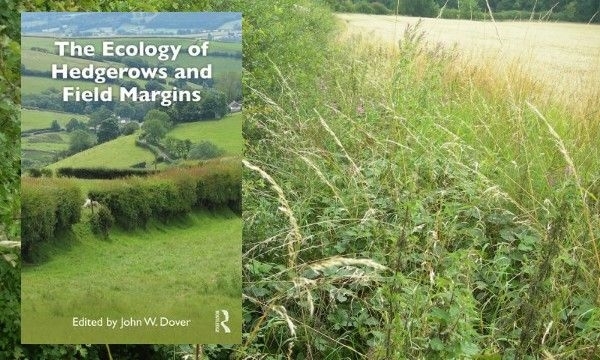
THE current state of our hedgerows and field margins are assessed in a new book.
The Ecology of Hedgerows and Field Margins, edited by Professor John Dover who worked on farmland butterflies at the Trust in the 1980s, sheds new light on the network of hedges, ditches and grass margins that form an integral part of the landscape across most of lowland Britain.
Split into two main sections, the book is aimed at advanced students and researchers and professionals in ecology, agriculture, wildlife conservation, natural history, landscape, environmental and land management.
The first deals with definitions, current and historic management, the impact of pesticides, the decline in hedge stock and condition, and new approaches to hedge evaluation using remote sensing techniques.
In contrast, the second section explores the pollination and biological pest control benefits provided by hedges and field margins and examines the ecology of some of the major groups that are found in hedgerows and field margins: butterflies and moths, carabid beetles, mammals, and birds.
The book was written by leading ecologists, including Professors Nick Sotherton, John Holland and Chris Stoate from the Game & Wildlife Conservation Trust (GWCT), culminating in research results that contribute to more enlightened management of hedges for wildlife.
Professor Sotherton, director of research at the Trust, wrote his chapter on managing the edges of crops to support wildlife.
“Since the 1970s, the GWCT and its predecessors have been involved in research in the UK’s field margins - so it is a great pleasure to contribute to this worthy book,” he said.
“Finding reasons to retain field margins and then to improve their management for a range of farmland wildlife groups has been a continuing theme of a research going back to a time when government funds were still available to grub them out. Times have changed for the better as this valuable book records.”
In Professor Stoate’s chapter, he focuses on bird and invertebrate ecology in field margins at GWCT’s research demonstration farm in Loddington, known as the Allerton Project.
Chris Stoate said: “I provided a summary of the relevant research that has been carried out at Loddington over the years, including that on field margin wildlife which has its own intrinsic (non-monetary) value.
“But there are also the ground and rove beetles, spiders, bumblebees, solitary bees, earthworms and others for which field margins play a crucial role, and which also influence our ability to produce food from the land. Not 'just' wildlife, but an essential part of our own ecology. As our understanding of them continues to grow, the importance of field margins in our lowland landscapes becomes increasingly apparent.”
Meanwhile, Professor Holland focused on the contribution of hedgerows to biological control in his chapter.
“Hedgerows support a diverse array of beneficial invertebrates throughout the year that can contribute to the control of crop pests,” he said.
“They are especially important because they are the predominant refuge for such creatures on farmland and are in close proximity to the crop.
“However, many have become degraded from poor management and contamination with agricultural inputs and more effort is needed to restore their potential as a source of beneficial invertebrates that contribute to sustainable farming.”
The book costs £39.99, with very limited copies remaining in our online shop.
Buy Now >
Notes to editors
The Game & Wildlife Conservation Trust – providing research-led conservation for a thriving countryside. The GWCT is an independent wildlife conservation charity which has carried out scientific research into Britain’s game and wildlife since the 1930s. We advise farmers and landowners on improving wildlife habitats. We employ more than 60 post-doctoral scientists and other research staff with expertise in areas such as birds, insects, mammals, farming, fish and statistics. We undertake our own research as well as projects funded by contract and grant-aid from government and private bodies.
For information, contact:
Eleanor Williams
Telephone: 07592 025476
Email: press@gwct.org.uk